Pakse travel - Laos, Asia
Pakse, a vibrant city in southern Laos, is known for its rich history, cultural significance, and natural beauty. Located at the confluence of the Xe Don and Mekong Rivers in Champasak Province, it serves as a key hub for trade and transportation. Home to a diverse mix of ethnic groups, including Lao, Vietnamese, and Chinese communities. Historically, Pakse was once the capital of the Kingdom of Champasak and later became a French administrative outpost, which still influences its architecture today. The city is a gateway to nearby attractions such as the UNESCO World Heritage site Wat Phou, a stunning Khmer temple complex, and the breathtaking Bolaven Plateau with its tea plantations and waterfalls.
Population: Estimate 88,000 people (as of 2024)
Economy: Pakse, a key economic hub in southern Laos, plays an important role in trade and transportation, connecting routes to Thailand, Cambodia, and Vietnam. The city has seen rapid growth since the mid-1990s, with tourism becoming a major driver of its economy. Attractions like the Bolaven Plateau and the UNESCO-listed Wat Phou have drawn increasing numbers of visitors, helping boost the hospitality and service sectors. Agriculture, particularly rice farming and small-scale industries like sawmills, also support the local economy. Urban development projects are underway to improve infrastructure and enhance Pakse’s appeal as a tourist destination, with a focus on sustainability and environmental initiatives.
Landmarks: Wat Luang, Wat Phabad, Champasak Provincial Museum, French Bridge, Wat Phou Salao, Bolaven Plateau, Tad Fane Waterfall, Si Phan Don (Four Thousand Islands)
Laos
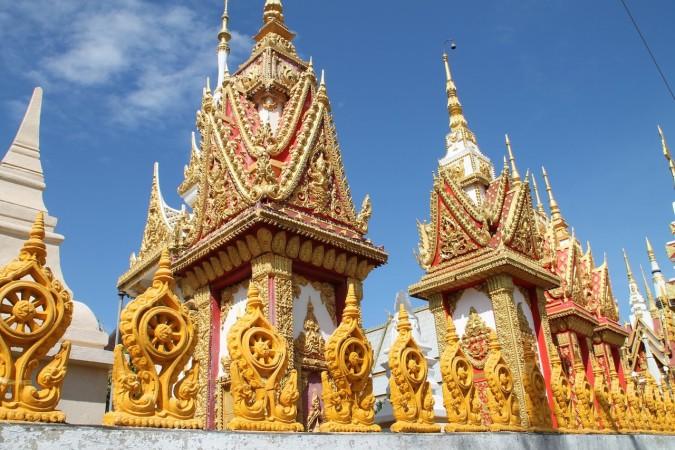
Overview of Pakse
History & Cultural Influence
Pakse, founded in 1905 as a French administrative outpost, served as the capital of the Kingdom of Champasak until Laos was unified in 1946. Its strategic location at the confluence of the Mekong and Xe Don rivers made it a key trade hub, which fueled its economic growth during the French colonial period. The French influence is still visible today, with a blend of French colonial and traditional Lao architecture throughout the city. After Laos gained independence, Pakse remained relatively quiet until the late 20th century, when tourism began to flourish, drawing visitors to its rich cultural and natural attractions. The city is home to significant cultural sites, including Wat Phou, a UNESCO World Heritage site, which showcases the area's deep Khmer heritage. Pakse's diverse population, including Lao, Chinese, and Vietnamese communities, contributes to a vibrant cultural scene, reflected in its festivals, cuisine, and religious practices. Today, the city continues to embrace tourism while preserving its cultural and environmental heritage, positioning itself as a gateway to ecotourism on the Bolaven Plateau.
Interaction with The Locals
When you visit Pakse, you’ll find locals to be warm and welcoming, eager to share their rich culture with travelers. The city, is a blend of different ethnic groups, including Lao, Vietnamese, and Chinese communities, as well as various indigenous groups from the surrounding Champasak province. Tourism plays an important role here, and while many locals in the industry speak some English, picking up a few basic Lao phrases can make your interactions even more enjoyable. Whether you're wandering through local markets, visiting temples, or exploring nearby villages, you’ll have plenty of opportunities to engage with the people and experience the local way of life. Just remember to respect cultural customs, such as dressing modestly at temples and removing your shoes before entering homes or religious sites.
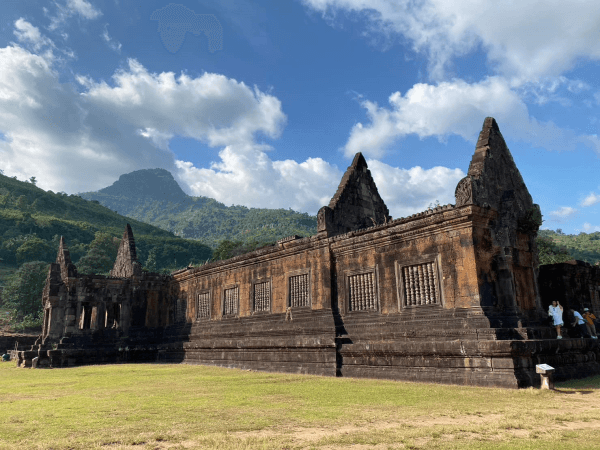
Wat Phu - © gather
Top Attractions in Pakse
Pakse offers a mix of cultural and natural attractions perfect for travelers seeking adventure and history. Don’t miss Wat Phu, an ancient UNESCO World Heritage temple complex, or the stunning Bolaven Plateau, known for its coffee plantations and breathtaking waterfalls like Tad Fane. For a taste of local culture, explore the bustling Dao Heuang Market and visit the serene Wat Luang, the city’s largest temple.
Wat Phu
Location: About 45 km south of Pakse
Wat Phu is an ancient Khmer temple complex and a UNESCO World Heritage site, dating back to the 5th century. Originally dedicated to the Hindu god Shiva, it later became a Buddhist site, and today, its stunning architecture and serene atmosphere draw history buffs and spiritual seekers alike. Nestled in the foothills, the temple offers breathtaking views of the surrounding countryside, making it a peaceful retreat from the bustling city.
Bolaven Plateau
Location: Approximately 30 km east of Pakse
The Bolaven Plateau is a lush highland area, famous for its coffee plantations, dramatic waterfalls like Tad Fane and Tad Lo, and cooler climate. It’s a perfect spot for trekking, exploring ethnic villages, or simply enjoying the refreshing escape from the lowland heat. The coffee here is some of the best in the country, so make sure to stop by a plantation and sample a cup!
Champasak Provincial Museum
Location: Central Pakse
In the heart of Pakse, the Champasak Provincial Museum offers a fascinating look into the region’s history and culture. From ancient artifacts to royal memorabilia, the exhibits provide a glimpse into Champasak’s rich heritage, making it an ideal stop for anyone interested in learning more about the area’s past.
Wat Luang
Location: Near the Sedone River in Pakse
Wat Luang is the largest temple in Pakse, known for its beautiful architecture and tranquil surroundings. Situated near the Sedone River, the temple serves as a spiritual hub for the local community and a center for Buddhist learning. Its peaceful grounds and vibrant structures make it a must-visit for those seeking a bit of serenity.
Tad Fane Waterfall
Location: Bolaven Plateau, about 38 km from Pakse
Tad Fane is a stunning twin waterfall plunging over 120 meters into a lush green valley. Located in the heart of the Bolaven Plateau, it’s a popular spot for nature lovers and photographers. Whether you're exploring nearby hiking trails or simply soaking in the views, this waterfall offers a spectacular connection to nature.
Dao Heuang Market
Location: Central Pakse
For a true taste of local life, head to Dao Heuang Market, the largest in Pakse. It’s a lively place where you can browse for fresh produce, sample street food, and shop for handmade crafts. The market offers a colorful, authentic glimpse into Lao culture and daily life, perfect for those looking to experience the local vibe.
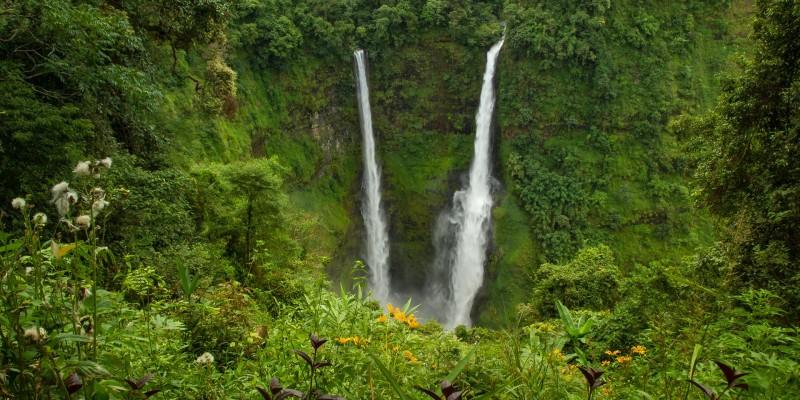
Bolaven Plateau - © gather
Must-Try Dishes in Pakse
When visiting Pakse, don’t miss the chance to try local favorites like Khao Piek, a comforting noodle soup with fresh herbs and flavorful broth, or Kaipen, a crispy fried seaweed snack served with spicy chili paste. For a taste of authentic Lao cuisine, indulge in Larb, a zesty minced meat salad, and Tam Mak Hoong, a spicy papaya salad bursting with vibrant flavors.
Khao Piek (Noodle Soup)
A comforting bowl of Khao Piek is made with thick rice noodles served in a flavorful broth, typically accompanied by chicken or pork, and garnished with fresh herbs and vegetables. It’s a popular dish in Pakse, often enjoyed as a hearty breakfast or lunch, offering a warm and satisfying meal that highlights the region’s love for fresh, simple ingredients.
Kaipen (Fried Seaweed)
Kaipen is a crispy snack made from freshwater green algae, seasoned with sesame seeds, dried into thin sheets, and flash-fried to perfection. Usually served with jaew bong, a spicy chili paste, this local delicacy brings out the unique flavors of Lao cuisine and is a favorite street food in Pakse.
Larb (Meat Salad)
Larb is a zesty, flavorful salad made with minced meat, like chicken, pork, or beef, mixed with herbs, lime juice, fish sauce, and ground toasted rice for added texture. Often served at social gatherings and celebrations, Larb is deeply rooted in Lao culinary traditions and a must-try for visitors seeking authentic Lao flavors.
Khao Jee (Baguette Sandwich)
Khao Jee is Pakse’s take on the classic baguette sandwich, a nod to the French colonial influence in Laos. This crispy baguette is filled with a mix of ingredients like lettuce, pickled vegetables, tomatoes, and meats such as pork or ham, making it a popular street food among locals and travelers alike.
Tam Mak Hoong (Spicy Papaya Salad)
Tam Mak Hoong, also known as spicy papaya salad, is a refreshing dish made from shredded green papaya, tomatoes, chilies, fish sauce, and lime juice. It’s known for its vibrant, tangy flavors and is a popular choice in Pakse, enjoyed as a side dish or light meal, perfect for those who love fresh and spicy ingredients.
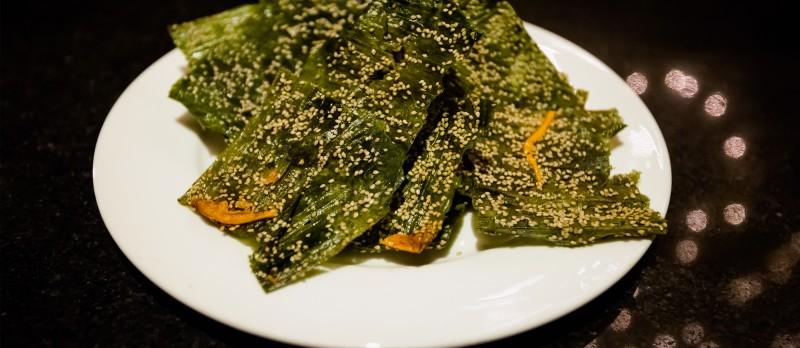
Kaipen - © gather
Weather in Pakse: Best Time to Visit
Climate Type
Pakse experiences a tropical savanna climate, characterized by distinct wet and dry seasons.
Temperature
The average maximum temperature throughout the year is 32.6°C (90.6°F). The hottest months are April and May, with temperatures reaching up to 35-36°C (95-97°F), while the coolest months are December and January, with lows around 19-20°C (66-68°F). The record high temperature recorded in Pakse was 41.3°C (106.3°F) in May.
Rainfall
Pakse receives an annual rainfall of approximately 1,970 mm (77.6 inches). The wettest months are from July to September, with over 350 mm of rain each month. In contrast, the driest period is from December to February, with less than 25 mm of rainfall per month.
Seasons
The dry season lasts from November to April, while the wet season runs from May to October.
Best Time to Visit
The ideal time to visit Pakse is between November and February when the weather is cooler and drier, offering comfortable temperatures and lush, green landscapes after the rainy season.
Times to Avoid
It’s best to avoid visiting from March to May when temperatures soar above 35°C (95°F) and during the peak rainy season from July to September, which can bring heavy rainfall.

Wat Luang - © gather
Festivals & Local Celebrations
Boat Race Festival
Time: Late October (around the 15th to 11th day of the lunar month)
The Boat Race Festival in Pakse is a lively three-day event along the Xe Don River. It features exciting boat races where teams compete in colorful longboats, along with costume festivals, local markets, street food, and music performances. The festival is a major celebration in the community, filled with cultural activities and traditional entertainment.
Lao New Year (Boun Pi Mai)
Time: Mid-April (around April 13-15)
Boun Pi Mai, or Lao New Year, is celebrated across Laos, including Pakse. The festival is known for its water-throwing festivities, symbolizing cleansing and renewal. Streets come alive with parades, and people visit temples to participate in religious rituals and honor Buddha. The celebrations bring together families and communities in a joyful start to the new year.
Boun Ok Phansa (End of Buddhist Lent)
Time: October (date varies based on the lunar calendar)
Boun Ok Phansa marks the end of the Buddhist Lent when monks return to their regular routines. In Pakse, you can see candlelit processions at local temples and the release of decorated banana leaf boats into the Mekong River, symbolizing the letting go of bad energy. The event is also filled with local food stalls and cultural performances, creating a festive atmosphere.
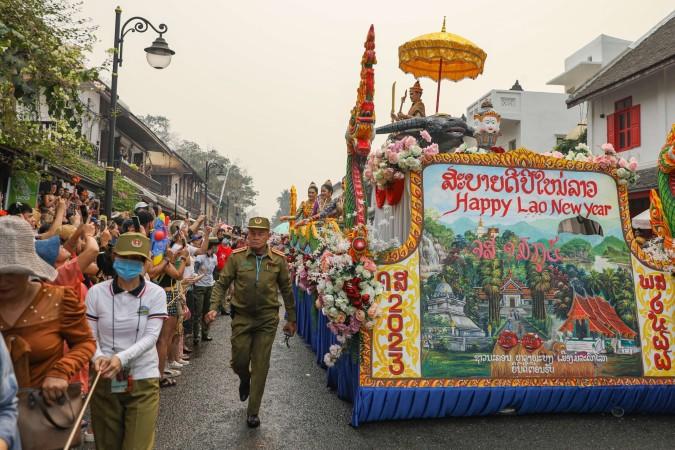
Lao New Year - © gather
What to Do in Pakse
Wat Phu
Located about 45 km south of Pakse, Wat Phu is an ancient Khmer temple complex and a UNESCO World Heritage site. Dating back to the 5th century, this temple offers breathtaking views of the surrounding plains and showcases stunning architectural details. The site is rich in history and spirituality, making it a must-see for those interested in ancient cultures and religions.
Bolaven Plateau
Famous for its lush greenery, stunning waterfalls, and expansive coffee plantations, the Bolaven Plateau is a paradise for nature lovers. Visitors can trek through the landscape, explore ethnic villages, and sample some of the finest coffee in Laos. The cooler climate and scenic views make it an ideal destination for adventure and relaxation.
Mekong River Boat Tour
A boat tour along the Mekong River is a great way to experience the natural beauty of Pakse and its surroundings. These tours offer scenic views of the landscape, local villages, and the daily life along the river, providing a unique perspective on the region.
Champasak Provincial Museum
In the heart of Pakse, the Champasak Provincial Museum offers a glimpse into the region's rich history and culture. Through artifacts, photographs, and exhibits, visitors can learn about Champasak's royal past, ethnic diversity, and the area's significance in Laos.
Dao Heuang Market
This bustling market in Pakse is the perfect place to experience local life. Visitors can browse through stalls selling textiles, handicrafts, fresh produce, and street food, making it a great spot to pick up souvenirs and enjoy authentic Lao flavors.
Tad Fane Waterfall
Situated on the Bolaven Plateau, Tad Fane is an awe-inspiring twin waterfall that plunges over 120 meters into a lush valley. The dramatic setting makes it a favorite for photographers and nature enthusiasts looking to experience the raw beauty of Laos.
Wat Luang
The largest temple in Pakse, Wat Luang is not only a place of worship but also a center for monk education. Its vibrant architecture and peaceful atmosphere provide a serene escape for visitors, making it a must-visit site for those interested in Lao Buddhism and temple culture.
Si Phan Don (Four Thousand Islands)
A day trip from Pakse, Si Phan Don is a tranquil area in the Mekong River, known for its scenic islands, white sandy beaches, and opportunities to spot the rare Irrawaddy dolphins. It’s a picturesque retreat for nature lovers and those looking to explore Laos’s river life.
Tad Yuang Waterfall
Another waterfall on the Bolaven Plateau, Tad Yuang is popular for its picturesque setting. Visitors can swim in its cool waters or enjoy a picnic while taking in the surrounding beauty, making it a favorite spot for both locals and travelers.
Cooking Class
For a more hands-on experience, taking a traditional Lao cooking class is a great way to dive into the local cuisine. Learn how to prepare dishes like laap (meat salad) and tam mak hoong (spicy papaya salad) while gaining insight into the flavors and techniques that define Lao cooking.
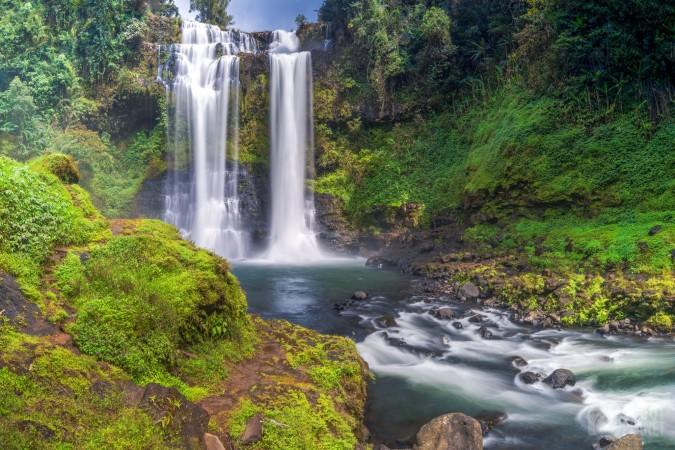
Tad Yuang Waterfall - © shootplanet
Culture Etiquette in Pakse
Greetings and Interactions
In Laos, the traditional greeting is the "nop," where you press your palms together at chest level and offer a slight bow. It's a respectful gesture used in most social situations. Avoid touching anyone’s head, as it is considered sacred, and never point your feet at people or Buddha images, as feet are viewed as the lowest part of the body.
Dress Code
When visiting temples or rural areas, it's important to dress modestly. Both men and women should cover their shoulders and knees. Always remove your shoes before entering temples, homes, or some businesses as a sign of respect.
Temple Etiquette
When inside temple grounds, be mindful of your behavior. Speak softly and refrain from climbing on or touching Buddha statues. Dressing appropriately—covering shoulders and knees—is essential when visiting these sacred sites.
Social Customs
Public displays of affection are generally discouraged in Laos. When giving or receiving items, use your right hand or both hands. Laos is a culture that values patience, so it’s important to stay calm and avoid showing frustration in public.
Dining Etiquette
When dining, the typical method is to use a spoon and fork, with the fork in your left hand to push food onto the spoon. It’s considered polite to sample a bit of everything that’s offered, showing appreciation for the meal.
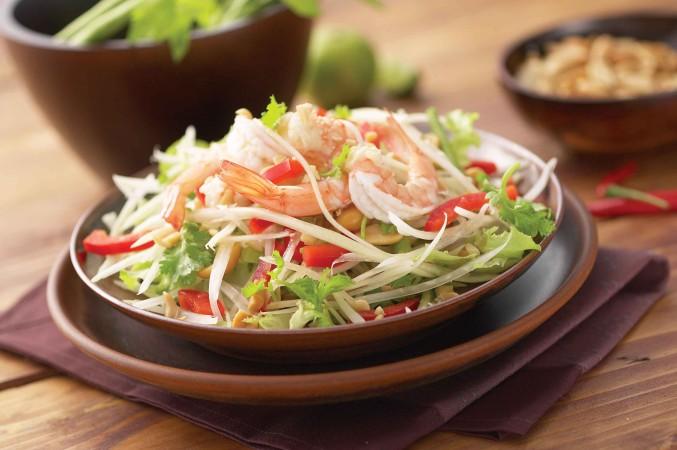
Tam Mak Hoong - © gather
Essential Travel Information
Getting to Pakse
By Air
Pakse International Airport (PKZ) is the most convenient way to reach the city, with direct flights connecting to major cities in Laos, Thailand, Vietnam, and Cambodia. You can easily fly into Pakse from Vientiane, Siem Reap, Ho Chi Minh City, or Bangkok.
By Bus
Pakse is well-connected by long-distance buses from cities like Vientiane and Savannakhet. Journey times vary, so it’s best to check schedules and opt for reputable bus services for a more comfortable and safe trip.
By Minivan
Minivans are a faster option than buses for traveling between cities in Laos, but they can be less comfortable due to limited space.
By Boat
For those traveling from the Four Thousand Islands (Si Phan Don), scenic boat rides along the Mekong River offer a unique and relaxing way to reach Pakse.
Private Transportation
Renting a car or motorbike gives you the freedom to explore Pakse and its surrounding areas at your own pace, making it easier to visit off-the-beaten-path attractions.
Getting Around Pakse
Walking
The city center is small and walkable, with many attractions, markets, and restaurants located within a short distance, making it easy to explore on foot.
Bicycles
Renting a bicycle is a popular choice for getting around the city and enjoying the local scenery at a relaxed pace.
Tuk-tuks
Tuk-tuks are widely available for short trips around Pakse. It’s common practice to negotiate fares before your journey to ensure a fair price.
Taxis
Although not as common as tuk-tuks, taxis can be a more comfortable option, especially if you have luggage or are traveling with a group.
ATM and Banking Services
Pakse has a number of banks with ATMs conveniently located throughout the city, including BCEL, Maruhan Japan Bank, Lao-Viet Bank, Bangkok Bank, and Phongsavanh Bank. BCEL tends to have the most ATM locations in town, making it easy to find one when needed. Most ATMs are available 24 hours a day and accept international cards such as VISA, Mastercard, and JCB. Withdrawal limits typically range between 2-8 million kip per day, with an average fee of around 20,000 kip per transaction.
Accommodation Choices
Pakse offers a variety of accommodation options to fit different budgets and preferences.
- 1918's Hostel is highly rated for its clean, comfortable dormitory beds, starting at 55,000 kip per night. The hostel also offers amenities like a garden, lounge area, 24-hour reception, and free bicycle rentals.
- You Empire Hostel and Bar is a good choice if you’re looking for private rooms. Prices range from 143,000 kip for a twin room with a fan to 209,000 kip for an air-conditioned double room. Dorm beds are also available, starting at 60,000 kip per night.
- Chato Hostel is another popular and modern option for backpackers, offering a convenient location and comfortable amenities.
Articles for you

Explore Yala National Park - Sri Lanka Travel, Asia
Tucked away in Sri Lanka’s southeastern corner, Yala National Park is where wild nature meets deep tradition. Known worldwide for its leopard population, the park is also home to elephants, sloth bears, crocodiles, and hundreds of bird species. Beyond wildlife, Yala opens doors to a cultural landscape dotted with ancient temples, Buddhist ruins, and coastal villages. For travelers seeking more than just a safari, Yala offers a chance to explore eco-tourism, local communities, and sacred heritage sites.
Population: The Yala National Park area doesn’t have a human population.
Economy: The economy around Yala National Park thrives on a blend of eco-tourism, agriculture, and local services. Safari tours, eco-lodges, and cultural experiences drive steady income for nearby towns like Tissamaharama and Kataragama, supporting thousands of families.
Landmarks: Famous for Block I of Yala and wildlife encounters, including elephants, sloth bears, crocodiles, and exotic bird species.

Explore Galle - Sri Lanka Travel, Asia
Nestled on Sri Lanka’s southern coastline, Galle is a vibrant city where history meets the sea. Its cobbled streets, colonial architecture, and serene beaches make it a must-visit destination for travelers seeking a blend of culture, adventure, and relaxation. A UNESCO World Heritage site, Galle captivates visitors with its Dutch Fort, bustling markets, and friendly locals. Whether you’re exploring the ramparts at sunset or savoring fresh seafood by the shore, Galle promises an unforgettable journey into Sri Lanka’s heritage.
Population: Approximately 113,000 in 2023.
Economy: Galle’s economy thrives on tourism, trade, and fisheries. The city’s historic fort, colonial architecture, and coastal charm draw thousands of international visitors each year, making tourism its main economic driver. Fishing remains vital for local livelihoods, supplying fresh seafood across the region.
Landmarks: Famous for the Galle Fort, Dutch Reformed Church & Maritime Museum, and Unawatuna Beach.

Explore Bentota - Sri Lanka Travel, Asia
Nestled along Sri Lanka’s southwestern coast, Bentota is a tropical paradise that blends golden beaches, vibrant culture, and thrilling adventures. Famous for its calm waters, luxury resorts, and scenic river estuary, Bentota has become a top destination for travelers seeking both relaxation and authentic experiences. From serene beach walks at sunrise to adrenaline-pumping water sports, this coastal town offers a perfect balance of leisure and exploration. With its proximity to Colombo and Galle, Bentota is easy to reach, making it an ideal stop for both short escapes and extended holidays.
Population: Approximately 37,000 in 2023.
Economy: Bentota’s economy thrives mainly on tourism, which drives local businesses such as hotels, restaurants, and wellness retreats. The town also benefits from fishing, coconut cultivation, and handicrafts like wood carving and batik textiles. Many residents rely on the growing demand for water sports and Ayurvedic treatments, making tourism the backbone of both income and employment in the area.
Landmarks: Famous for Bentota Beach, Bentota River Safari, and Kande Vihara Temple.

Explore Mirissa - Sri Lanka Travel, Asia
Mirissa is a charming coastal town on Sri Lanka’s southern shoreline. Known for its golden beaches, turquoise waters, and vibrant marine life, it has become a must-visit stop for travelers exploring the island. Many come for whale watching, surfing, and sunset views at Coconut Tree Hill, but Mirissa offers much more than postcard beauty. The fishing boats you see anchored by the bay carry generations of stories. Local traditions, delicious cuisine, and a laid-back rhythm of life shape every visitor’s experience.
Population: Approximately 4,700 in 2023.
Economy: Mirissa’s economy is largely shaped by its coastal location. Fishing has long been the backbone of local livelihoods, with generations relying on the Indian Ocean for income. In recent decades, tourism has become the main driver of growth, thanks to whale watching, surfing, and beachside hospitality.
Landmarks: Famous for Mirissa Beach, Coconut Tree Hill, and Parrot Rock Bridge.

Explore Nuwara Eliya - Sri Lanka Travel, Asia
Tucked away in the Central Highlands of Sri Lanka, Nuwara Eliya is often called “Little England”. With its rolling tea plantations, cool misty mornings, and colonial charm, this mountain town feels like a step into another world. Travelers come here to breathe fresh air, walk through flower gardens, sip the finest Ceylon Tea, and enjoy a pace of life far from the island’s busy cities. Whether you’re drawn by scenic landscapes, heritage architecture, or the warmth of its people, Nuwara Eliya is a destination that blends nature, culture, and history in perfect harmony.
Population: Approximately 781,000 in 2023.
Economy: Nuwara Eliya’s economy thrives mainly on tea production, as it sits in the heart of Sri Lanka’s central highlands, famous worldwide for Ceylon Tea. The city also benefits from a growing tourism industry, attracting visitors with its colonial charm, cool climate, and scenic landscapes.
Landmarks: Famous for Gregory Lake, Hakgala Botanical Garden, and Victoria Park.

Explore Sukau - Malaysia Travel, Asia
Nestled on the banks of the Kinabatangan River in Sabah, Malaysian Borneo, Sukau is a destination where wildlife, culture, and conservation come together. Known as one of Asia’s top spots for river safaris and eco-tourism, this quiet village offers a front-row seat to encounters with Bornean orangutans, pygmy elephants, proboscis monkeys, and exotic birdlife.
Population: Approximately 1,400 in 2019.
Economy: Sukau’s economy is shaped by its riverine location and natural resources. Traditionally, the Orang Sungai community relied on fishing, small-scale farming, and forest gathering for their livelihood. Today, the village has shifted toward eco-tourism, with river cruises, jungle trekking, and homestays providing income.
Landmarks: Famous for the Kinabatangan River cruises, Gomantong Caves, and Ox-bow lakes and wetlands.
